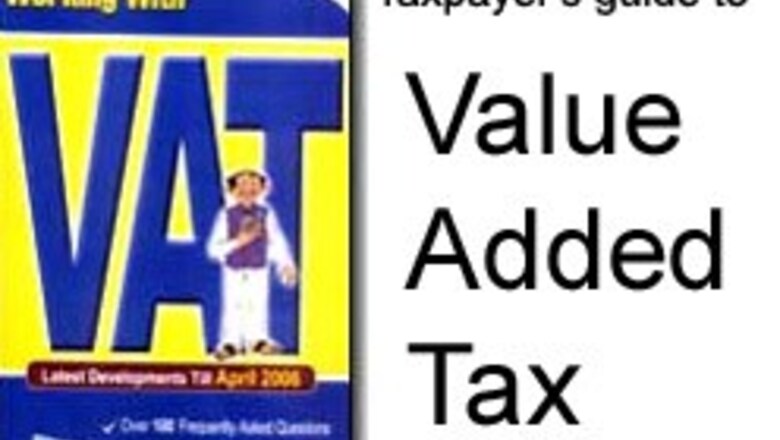
views
New Delhi: It has been a year since the Value Added Tax (VAT) was imposed in almost all Indian states, but many traders still do not issue cash memos or bills for the goods they sell, though they include VAT in the price they charge. If a customer insists on a bill, the trader says: "You will have to pay VAT."
This is just one of the issues raised in the book Working with VAT by Kul Bhushan, which boasts of a foreword by India's Finance Minister P. Chidambaram. The book brings the VAT story up to date after it was introduced April 1, 2005.
Kul Bhushan, a former business editor, goes on to say that in such an instance, the taxpayer ends up paying tax twice while the trader pays just once!
Sometimes traders do not issue invoices because they get goods without invoices from their suppliers - manufacturers or importers. Thus consumers are not getting invoices/bills as a matter of routine - even for goods valued at hundreds or thousands of rupees. These cash transactions evade VAT as well as income tax.
According to the book, VAT has many positive benefits for the business community as well.
Firstly, taxpayers are not harassed by visiting tax officials, as VAT officers have fewer powers and so less tax inspections.
Secondly, taxpayers have to make fewer visits to tax offices to collect and hand in their forms because of self-assessment. Finally, the number of tax forms under VAT has been reduced.
VAT has now replaced sales tax in all Indian states except Uttar Pradesh and Tamil Nadu. With practical examples in non-technical language, this book provides a broad outline of this system, especially useful to professional accountants, tax lawyers and senior executives.
Working with VAT follows Kul Bhushan's earlier book How To Deal With VAT which was published in 2005. The latest book presents the new developments that should be taken into account since the introduction of the tax.
It also raises serious issues like the huge problem faced by most traders - how to account for untaxed goods as on April 1, 2005 when VAT was introduced.
The book highlights several problems with VAT rates and classifications like different VAT rates in different states, which is seen as one of the biggest hurdles for India to become a single, common market.
The book points out that the Federation of Indian Chambers of Commerce and Industry (FICCI) has issued a report on inconsistency in VAT schedules /classification of goods across states. Meanwhile, an internationally accepted system of classifying goods - as in the case of customs - has been suggested to assist India in becoming a common market.
Kul Bhushan says that VAT has brought about a drastic change for traders dealing in cash. Many traders and small and medium enterprises (SMEs) that usually do not maintain proper account books have to do so now for claiming Input Tax.
The author adds that taxpayers have to spend more time in accounting, maintain more account books, file VAT Returns and probably move to computerised accounting. However, form filling has been drastically reduced, as there are no transactional forms.
Most importantly, Working with VAT explains VAT to the taxpayer from his/her viewpoint in a simple manner and can be understood by people other than professional accountants and tax lawyers.




















Comments
0 comment